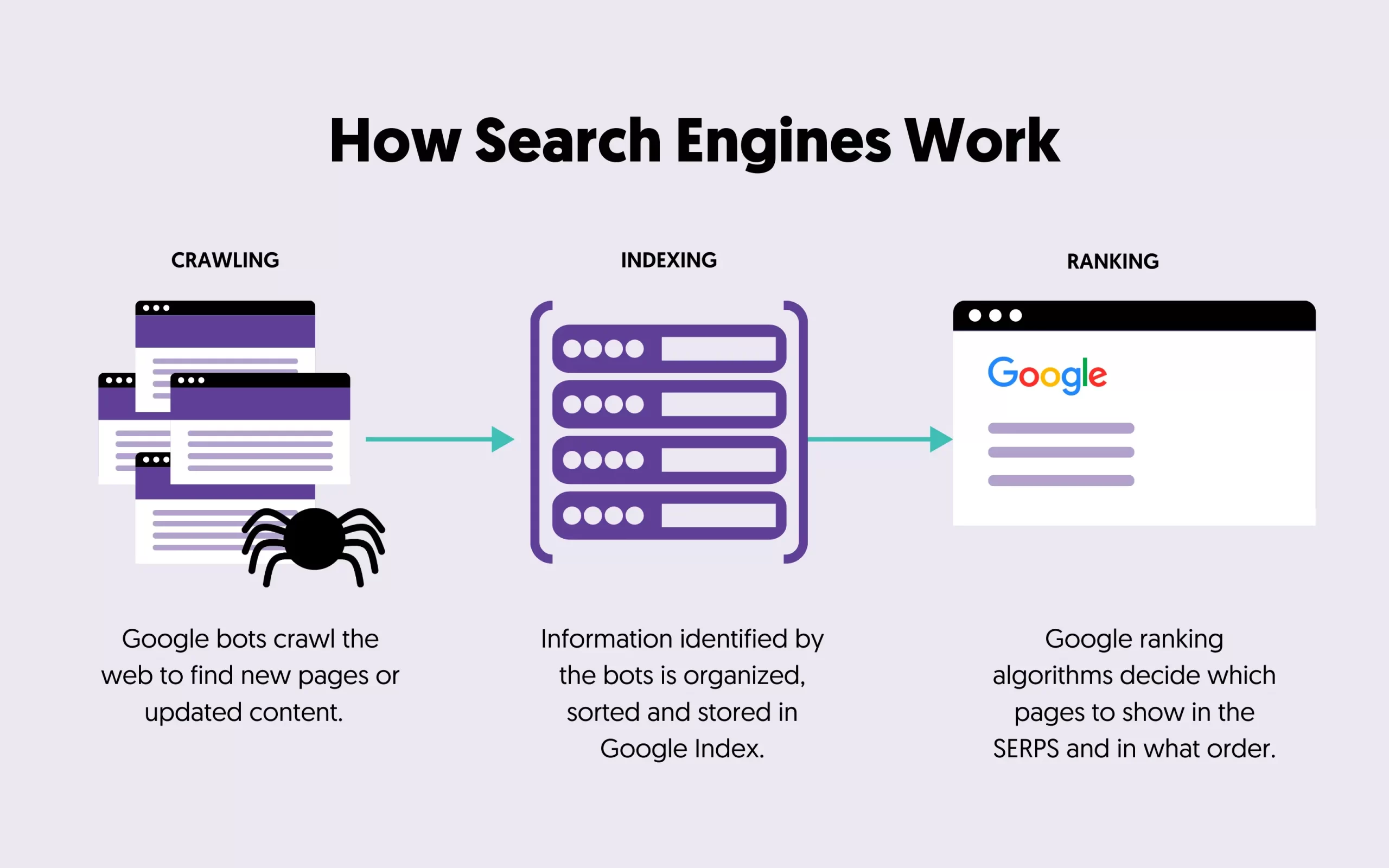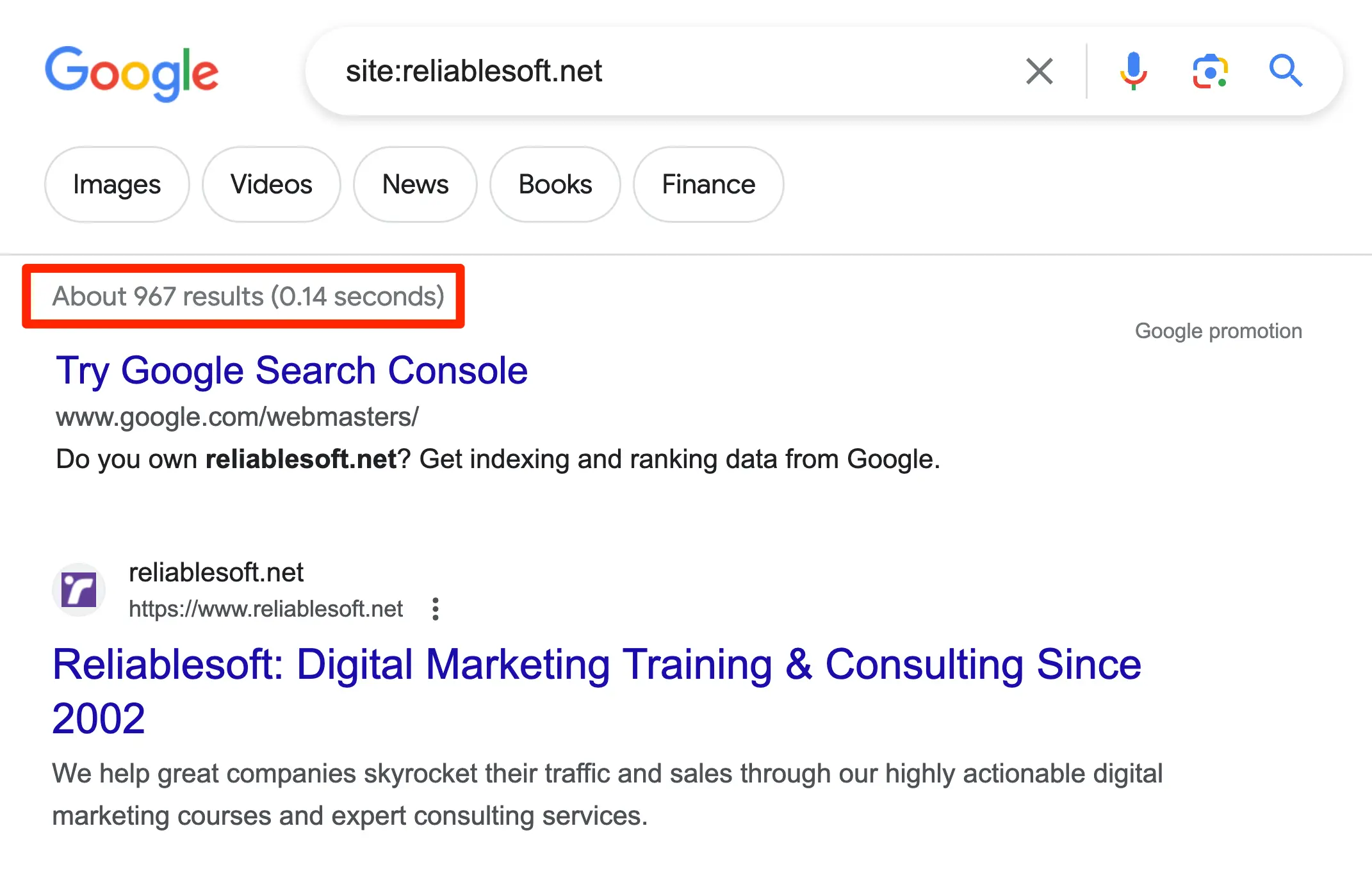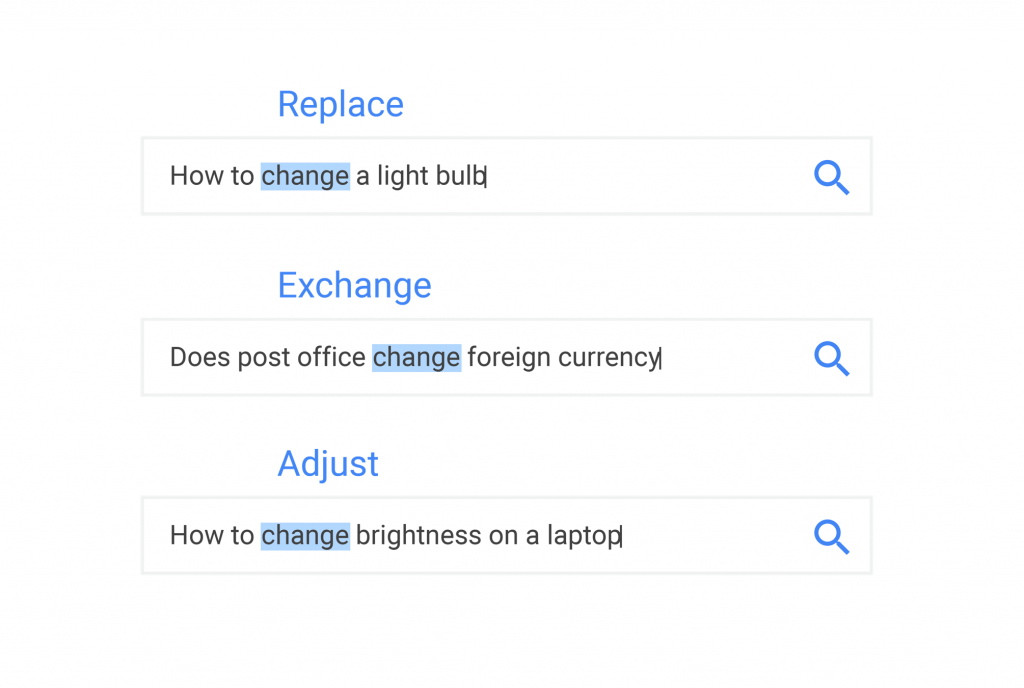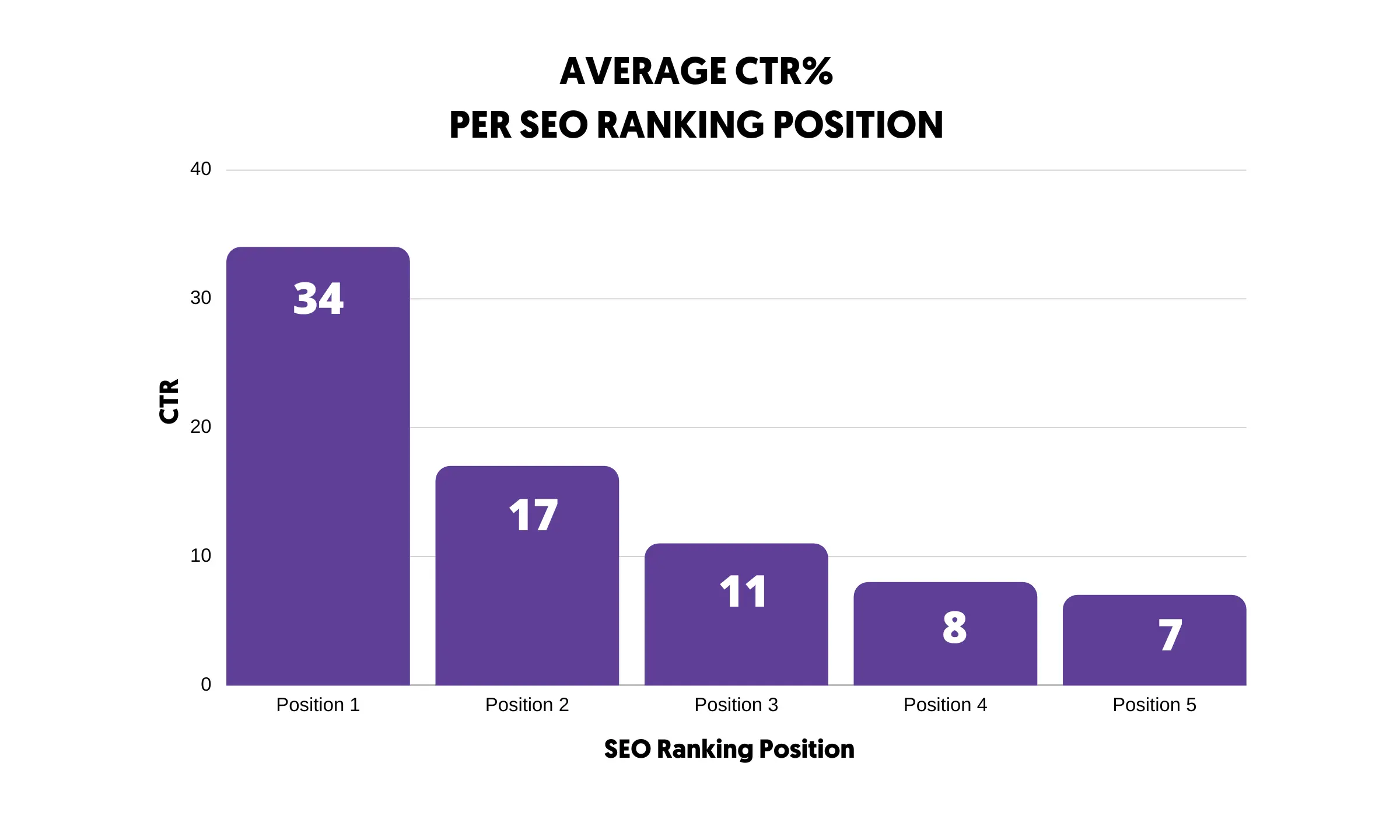If you are a developer, designer, small business owner, or marketing professional, you must learn how search engines work.
Having a clear understanding of how search works can help you create a website that search engines can access, index, and rank, which has many added benefits. It’s the first step you need to take before even dealing with Search Engine Optimization (SEO) or any other SEM (Search Engine Marketing) tasks.
In this guide, you'll learn how search engines work step by step to find, organize, and present information to users.
What Is A Search Engine?
A search engine is a complex software system that searches the web to find web pages that answer users' search queries. The search results (SERPs) are presented in order of importance and relevance to what the user is looking for.
Modern search engines include different types of content in their results, including articles, videos, images, forum postings, and social media posts.
The most popular search engine is Google, with over 90% market share, followed by Bing, DuckDuckGo, and others.
How Do Search Engines Work
Search engines work by crawling publicly available pages using web crawlers. Web crawlers (aka spiders or bots) are special programs that crawl the web to find new pages or updates to existing pages and add this information to a search index.
This process is broken down into three main stages:
- The first stage is the process of discovering the information.
- The second stage is organizing the information.
- The third stage is deciding which pages to show in the results for a search query and in what order.
This is generally known as crawling, indexing, and ranking.

1. Crawling
During the crawling process, the goal of search engines is to find information that is publicly available on the Internet. This includes new content or updates made to existing content. They do these using a number of software programs called crawlers.
To simplify a complicated process, it’s enough for you to know that the job of crawlers, is to scan the Internet and find the servers (also known as webservers) hosting websites.
They create a list of all the web servers and the number of websites hosted by each server.
They visit each website and use different techniques to find out how many pages they have and the type of content on each page (text, images, videos, etc).
When visiting a webpage, they also follow any links (either pointing to pages within the site or to external websites), to discover more and more pages.
They do this continuously and keep track of changes made to a website so that they know when new pages are added or deleted, when links are updated, etc.
If you consider that there are more than 130 trillion individual pages on the Internet today, you can imagine that this is a lot of work.
Why care about the crawling process?
Your first concern when optimizing your website for search engines is to ensure that they can access it correctly otherwise, if they cannot ‘read’ your website, you shouldn’t expect much in terms of high rankings or search engine traffic.
As explained above, crawlers have a lot of work to do, and you should try and make their job easier.
There are a number of things to do to make sure that crawlers can discover and access your website in the fastest possible way without problems.
- Use Robots.txt to specify which pages of your website you don’t want crawlers to access. For example, pages like your admin or backend pages and other pages you don’t want to be publicly available on the Internet.
- Big search engines like Google and Bing have tools (aka Webmaster tools) you can use to give them more information about your website (number of pages, structure, etc) so that they don’t have to find it themselves.
- Use an XML sitemap to list all important pages of your website so that the crawlers can know which pages to monitor for changes.
- Use the "noindex" tag to instruct search engine crawlers not to index a particular page.
For more information, read our technical SEO guide, which includes examples of optimizing your website for the crawling phase.
2. Indexing
Crawling alone is not enough to build a search engine. Information identified by the crawlers needs to be organized, sorted, and stored so that the search engine algorithms can process it before being made available to the end-user.
This process is called Indexing.
Search engines don’t store all the information found on a page in their index, but they keep things like when it was created/updated, title and description of the page, type of content, associated keywords, incoming and outgoing links, and a lot of other parameters that are needed by their algorithms.
Google likes to describe its index as the back of a book (a really big book).
Why care about the indexing process?
It’s very simple, if your website is not in their index, it will not appear for any searches.
This also implies that the more pages you have in the search engine indexes, the more your chances of appearing in the search results when someone types a query.
Notice that I mentioned the word ‘appear in the search results', which means in any position and not necessarily on the top positions or pages.
In order to appear in the first 5 positions of the SERPs (search engine results pages), you have to optimize your website for search engines using a process called Search Engine Optimization, or SEO in short.
How to find how many pages of your website are included in the Google index?
There are two ways to do that.
Open Google and use the site operator followed by your domain name. For example, site:reliablesoft.net. You will find out how many pages related to the particular domain are included in the Google Index.

The second way is to create a free Google Search Console account and add your website.
Then look at the Indexed Pages report located under Pages > Indexing.
3. Ranking
The third and final step in the process is for search engines to decide which pages to show in the SERPS and in what order when someone types a query. This is called the ranking process and is achieved through the use of search engine ranking algorithms.
In simple terms, these are pieces of software that use a number of rules to decide which are the best results for a search query.
These rules and decisions are made based on what information is available in their index.
Watch the video tutorial to learn how search engines work.
How Do Search Engine Algorithms Work?
Search engine algorithms examine several factors and signals to find the best match for a user query. This includes looking at the relevancy of the content to the words typed by the user, the usability of a page, the user's location, what other users found useful for the particular query, and many other factors.
It's important to mention that search engine ranking algorithms have become really complex over the years. In the beginning (think 2001), it was as simple as matching the user’s query with the page's title, but this is no longer the case.
Google’s ranking algorithm considers more than 255 rules before making a decision, and nobody knows for sure what these rules are.
Search engines use machine learning and AI to make decisions based on parameters inside and outside the boundaries of the content found on a web page.
To make it easier to understand, here is a simplified process of how search engine ranking factors work:
Step 1: Analyze User Query
The first step is for search engines to understand what kind of information the user is looking for.
To do that, they analyze the user’s query (search terms) by breaking it down into a number of meaningful keywords.
A keyword is a word that has a specific meaning and purpose.
For example, when you type “How to make a chocolate cake”, search engines know from the words how-to that you are looking for instructions on how to make a chocolate cake, and thus the returned results will contain cooking websites with recipes.
If you search for “Buy refurbished ….”, they know from the words buy and refurbished that you are looking to buy something, and the returned results will include eCommerce websites and online shops.
Machine learning has helped them associate related keywords together. For example, they know that the meaning of the query “how to change a light bulb” is the same as this “how to replace a light bulb”.

They are also clever enough to interpret spelling mistakes, understand plurals, and extract the meaning of a query from natural language (either written or verbal in case of Voice search).
Step 2: Finding matching pages
The second step is to look into their index and decide which pages can provide the best answer for a given query.
This is a very important stage in the whole process for both search engines and webmasters. Search engines need to return the best possible results in the fastest possible way so that they keep their users happy. Webmasters want their websites to be picked up so that they get traffic and visits.
This is also the stage where good SEO techniques can influence the decisions made by the algorithms.
To give you an idea of how matching works, these are the most critical factors:
Title and content relevancy - how relevant are the title and content of the page to the user query?
Type of content – if the user asks for images, the returned results will contain images, not text.
Quality of the content – content needs to be thorough, useful and informative, unbiased, and cover both sites of a story.
Quality of the website – The overall quality of a website matters. Google will not show pages from websites that don’t meet their quality standards.
Date of publication – For news-related queries, Google wants to show the latest results, so the publication date is also considered.
The popularity of a page – This doesn’t have to do with how much traffic a website has but how other websites perceive the particular page. A page that has a lot of references (backlinks) from other websites is considered to be more popular than other pages with no links.
Language of the page – Users are served pages in their language, and it’s not always English.
Webpage Speed – Websites that load fast (think 2-3 seconds) have a small advantage compared to websites that are slow to load.
Device Type - Users searching on mobile are served mobile-friendly pages.
Location – Users searching for results in their area, i.e., “Italian restaurants in Ohio,” will be shown results related to their location.
That’s just the tip of the iceberg. As mentioned before, Google uses more than 255 factors in its algorithms to ensure that its users are happy with the results they get.
Step 3: Present the results to the users
The search results, typically known as the Search Engine Results Pages (SERPs), are presented in an ordered list. The layout of SERPs often includes various elements such as organic listings, paid ads, featured snippets, knowledge graphs, rich snippets, and more, depending on the nature of the query.
For example, a search for a specific news item might bring up recent news articles, while a query for a local restaurant could display a map with nearby locations.
Why care how search engine ranking algorithms work?
In order to get traffic from search engines, your website needs to appear in the top positions on the first page of the results.
It is statistically proven that the majority of users click one of the top 5 results (both desktop and mobile).

Appearing on the second or third page of the results will not get you any traffic at all.
Traffic is just one of the benefits of SEO, once you get to the top positions for keywords that make sense for your business, the added benefits are much more.
Knowing how search engines work can help you adjust your website and increase your rankings and traffic.
Conclusion
Search engines have become very complex computer programs. Their interface may be simple but the way they work and make decisions is far from simple.
The process starts with crawling and indexing. During this phase, the search engine crawlers gather as much information as possible for all the websites that are publicly available on the Internet.
They discover, process, sort, and store this information in a format that search engine algorithms can use to make a decision and return the best possible results back to the user.
The amount of data they have to digest is enormous, and the process is completely automated. Human intervention is only done in the process of designing the rules to be used by the various algorithms, but even this step is gradually being replaced by computers through the help of artificial intelligence.
As a webmaster, your job is to make their crawling and indexing job easier by creating websites that have a simple and straightforward structure.
Once they can “read” your website without issues, you then need to ensure that you give them the right signals to help their search ranking algorithms and pick your website when a user types a relevant query (that’s SEO).
Getting a tiny share of the overall search engine traffic is enough to build a successful online business.



